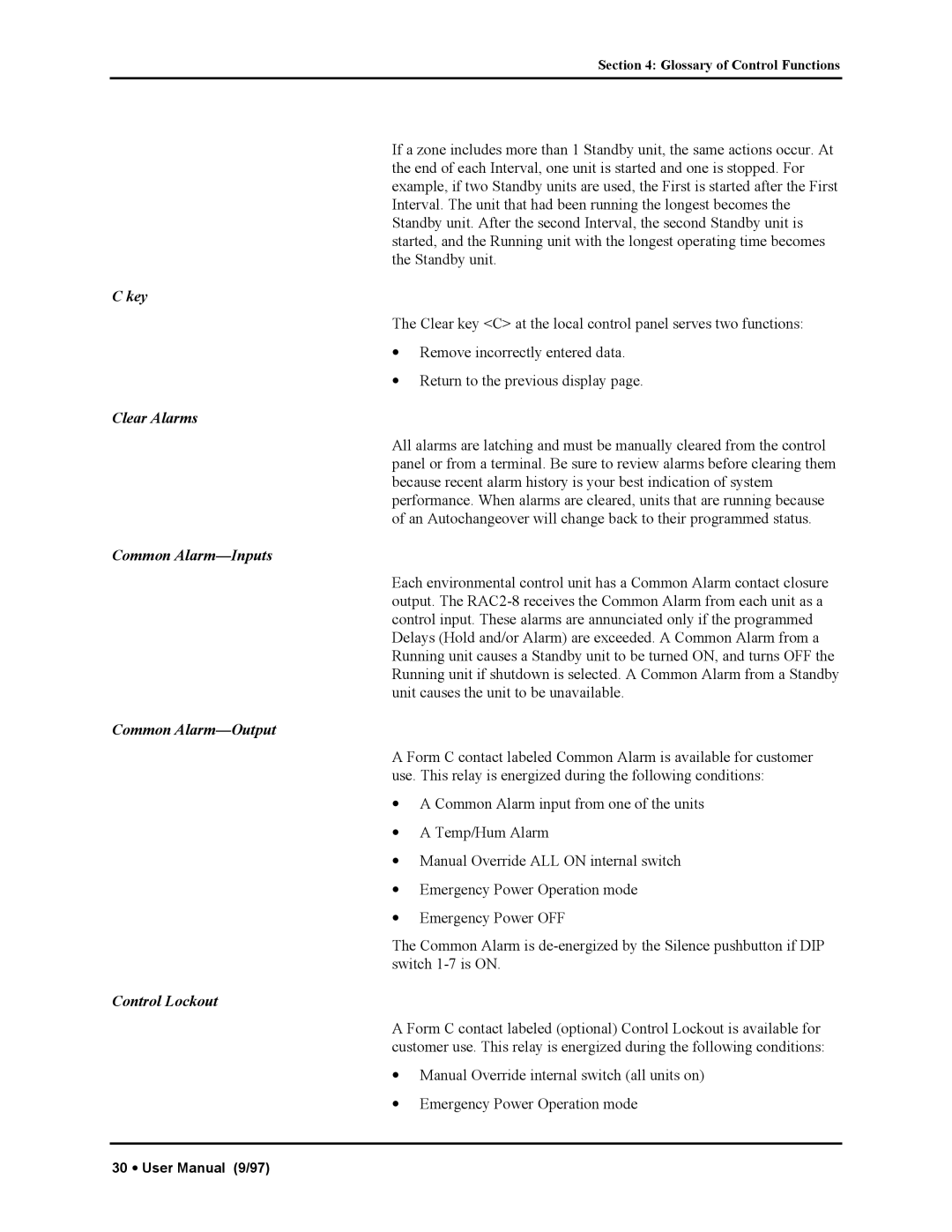
Section 4: Glossary of Control Functions
If a zone includes more than 1 Standby unit, the same actions occur. At the end of each Interval, one unit is started and one is stopped. For example, if two Standby units are used, the First is started after the First Interval. The unit that had been running the longest becomes the Standby unit. After the second Interval, the second Standby unit is started, and the Running unit with the longest operating time becomes the Standby unit.
C key
The Clear key <C> at the local control panel serves two functions:
•Remove incorrectly entered data.
•Return to the previous display page.
Clear Alarms
All alarms are latching and must be manually cleared from the control panel or from a terminal. Be sure to review alarms before clearing them because recent alarm history is your best indication of system performance. When alarms are cleared, units that are running because of an Autochangeover will change back to their programmed status.
Common Alarm—Inputs
Each environmental control unit has a Common Alarm contact closure output. The
Common Alarm—Output
A Form C contact labeled Common Alarm is available for customer use. This relay is energized during the following conditions:
•A Common Alarm input from one of the units
•A Temp/Hum Alarm
•Manual Override ALL ON internal switch
•Emergency Power Operation mode
•Emergency Power OFF
The Common Alarm is
Control Lockout
A Form C contact labeled (optional) Control Lockout is available for customer use. This relay is energized during the following conditions:
•Manual Override internal switch (all units on)
•Emergency Power Operation mode
30 • User Manual (9/97)
